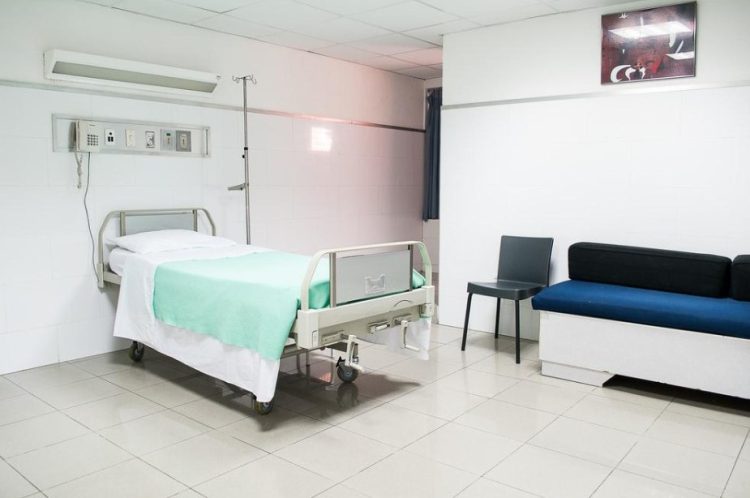If you’re planning on relocating your medical office, you’re not the only one!
Many doctors, physicians, and healthcare professionals chose to relocate their practices last year. Professionals have discussed reasons for their move, although they’re not all that important in this context. What you should focus on is the process of relocating a medical office itself. In a nutshell, medical facility relocations aren’t simple. They typically involve various steps and phases that you have to fully prepare for. The lack of proper preparation on your part can make it impossible to overcome any challenges that’ll inevitably arise during the business move.
Don’t worry, though! There are always steps you can take to ensure that your medical office move goes as smoothly as possible. Let’s discuss some common medical facility relocation challenges and their solutions.
Challenge #1: Planning the Move
The first few challenges you’ll face will likely be during the planning phase of your medical office move. You might notice how tricky the overall process will be right off the bat. When you’re looking for new sites for your office, try to find a location that’ll be accessible to your current patients. You should give your existing patients the opportunity to continue getting your services even after you relocate. Naturally, this will be harder to do if you’re moving to a location that’s too far away.
Other planning issues you need to prepare for can include the continuation of operations during the move. You might have some patients who require your services urgently while you’re relocating. You should determine how you’ll deal with such patients. Will you set up a smaller temporary or remote office to consult with them, or will you simply refer the patients to another doctor? Make sure to come up with the solution well in advance!

Challenge #2: Notifying Patients
Speaking of patients, notifying them is the most important aspect to focus on once you’re done planning the medical facility move. You should alert your patients of the move a few months before it actually occurs. This will help your patients adjust to the change. They’ll get time to familiarize themselves with your new location (if it’s close enough), or make other arrangements to fulfill their healthcare requirements.
You can notify patients by running a simple marketing campaign. Start setting up notifications in the form of banners, posters, and/or flyers early. Make sure that marketing tools highlighting the move are placed in areas where patients and vendors are most likely to notice them. If you can’t afford to run a physical marketing campaign, you can also go digital! Send emails or messages to customers, and post on your official business pages about the office move.
Challenge #3: Notifying Other Stakeholders
Your patients aren’t the only people who interact and transact with your medical business. You also likely have some vendors that you regularly engage with. These vendors can be any third parties that you’re monetarily involved with and payable to (or those who are payable to you). You need to notify all of these parties of your medical facility relocation to make sure that any future payables are delivered to the right address.
Other stakeholders can include your postal service, in-network providers, and other insurance providers. It’s best to notify all of these stakeholders as it’ll ensure that all future interactions with them are taken care of at the right address. If you fail to update your official business address, you’ll inevitably miss out on regular payments and get into legal trouble.

Challenge #4: Relocating Heavy Machinery
No medical facility or office can function without heavy machinery in it. You could have medical equipment, scanning or printing machines, heavy furniture, and other bulky items in your doctor’s office. All, or a majority, of these items, will need to be relocated during your business move. This is often a highly challenging phase of medical office relocations.
The best way to relocate heavy medical office machinery and equipment is by hiring professional movers to do it. Getting professional moving services will be an additional cost, but it’ll be a worthwhile one. If you try to move these items without professional assistance, you can damage them or get injured in the process of moving them. Improper delivery of medical equipment can also result in a big loss. This is easily avoidable if you just hire professional business movers!
Challenge #5: Finding Professional Movers
Now, the challenge is finding good and reliable moving companies to reach out to. Start by searching for reputable commercial moving companies in your local area or state. You can gauge the legitimacy of a good moving company if it has been in operation for many years, has a team of credible movers, and can be vouched for by previous customers. If a company ticks all these boxes, you’re good to go.
Good luck!

Looking for Reliable Medical Facility Movers in CA?
Are you ready to overcome all challenges and conduct a smooth medical facility relocation? Let the professional movers at ValleyRelocation help you do it!
It has been one of California’s most trusted moving companies for over three decades now. Their business movers are highly skilled and experienced in providing a range of commercial relocation services. You can get the specialized logistics you need from them.
 Hi Boox Popular Magazine 2024
Hi Boox Popular Magazine 2024



